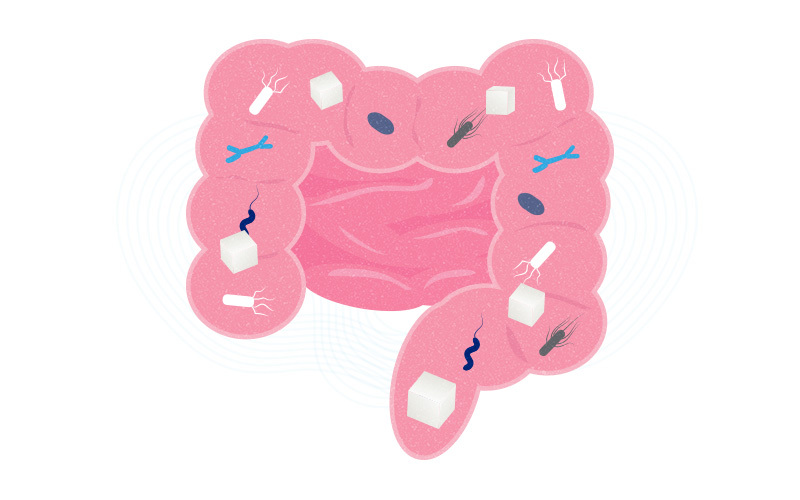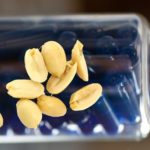Shaping our intestinal microbiome: What makes certain microbes more ‘fit’?

We now know the microbes that live in our intestines — often called our microbiome — influence our health in many ways. The balance among competing microbial species is believed to contribute to inflammatory bowel disease (IBD), immune disorders, food allergy, neurodegenerative diseases, cancer, and more.
The sugars in our diets, in turn, influence that balance — which microbes thrive and which don’t. Added to that, the microbes excrete thousands of different metabolites that influence each other’s survival — and our health.
New research led by Seth Rakoff-Nahoum, MD, PhD, in Boston Children’s Divisions of Infectious Diseases and Gastroenterology lays down some key stakes in understanding how these complex parts come together. The study, published online in the journal Cell, focused on Bacteroides species, which predominate in the human intestine.
“We need to learn how each species and strain of the gut microbiome, in particular Bacteroides species, survive in our guts if we want to enhance or diminish them,” he says. “Gut bacteria compete to use the undigested sugars in our diets as their energy source. Some have half of their genome dedicated to better using these sugars.”
The microbiome: A three-way interaction
Rakoff-Nahoum, first author Sun-Yang Park, PhD, and their colleagues systematically tested how metabolites in the gut impact the growth of Bacteroides. One metabolite stood out as inhibitory to certain Bacteroides: butyrate, a short-chain fatty acid that plays a critical role in the host, including development of the immune system. When the researchers grew Bacteroides in different sugars from the human diet, they found that butyrate’s anti-microbial effect depended on what sugar each strain was using.
“If you take any two strains and grow each in Sugar X, in the presence of butyrate, Strain A will die in its tracks while Strain B grows as if butyrate was not even there,” elaborates Rakoff-Nahoum. “With Sugar Y, we see the opposite: Strain B is now is killed by butyrate, while Strain A is unaffected.”
Why does butyrate kill some Bacteroides but not others? The study identified a third dimension: genetic factors. Surprisingly, slight variations in certain genes that normally don’t vary among bacteria produced differing sensitivity to butyrate among Bacteroides strains.
“We initially thought these genes would be very similar among all bacteria, as they perform basic cellular functions,” says Rakoff-Nahoum. “But the Bacteroides change them, likely to help them deal with the special environment in our gut.”
This work is just the beginning, he adds.
“We want to explore how we could use combinations of metabolites and specific glycans in the diet to shape the microbiome and treat conditions in which we think the microbiome is important, such as IBD, allergy, and cancer.”
Learn more about gastroenterology, hepatology and nutrition research at Boston Children’s.
Related Posts :
-

Diet, the microbiome, and how insulin resistance causes metabolic syndrome
Up to a third of U.S. adults have metabolic syndrome, a constellation of high blood pressure, high blood sugar, ...
-

Piecing together the preterm infant microbiome
The human microbiome — the collection of microbes living in the gut — is now recognized as an important contributor to health ...
-

Intestine chip models gut function, in disease and in health
The small intestine is much more than a digestive organ. It’s a major home to our microbiome, it's a ...
-

Could poop transplants treat peanut allergy? A clinical trial begins
Increasing evidence supports the idea that the bacteria living in our intestines early in life help shape our immune systems. ...





